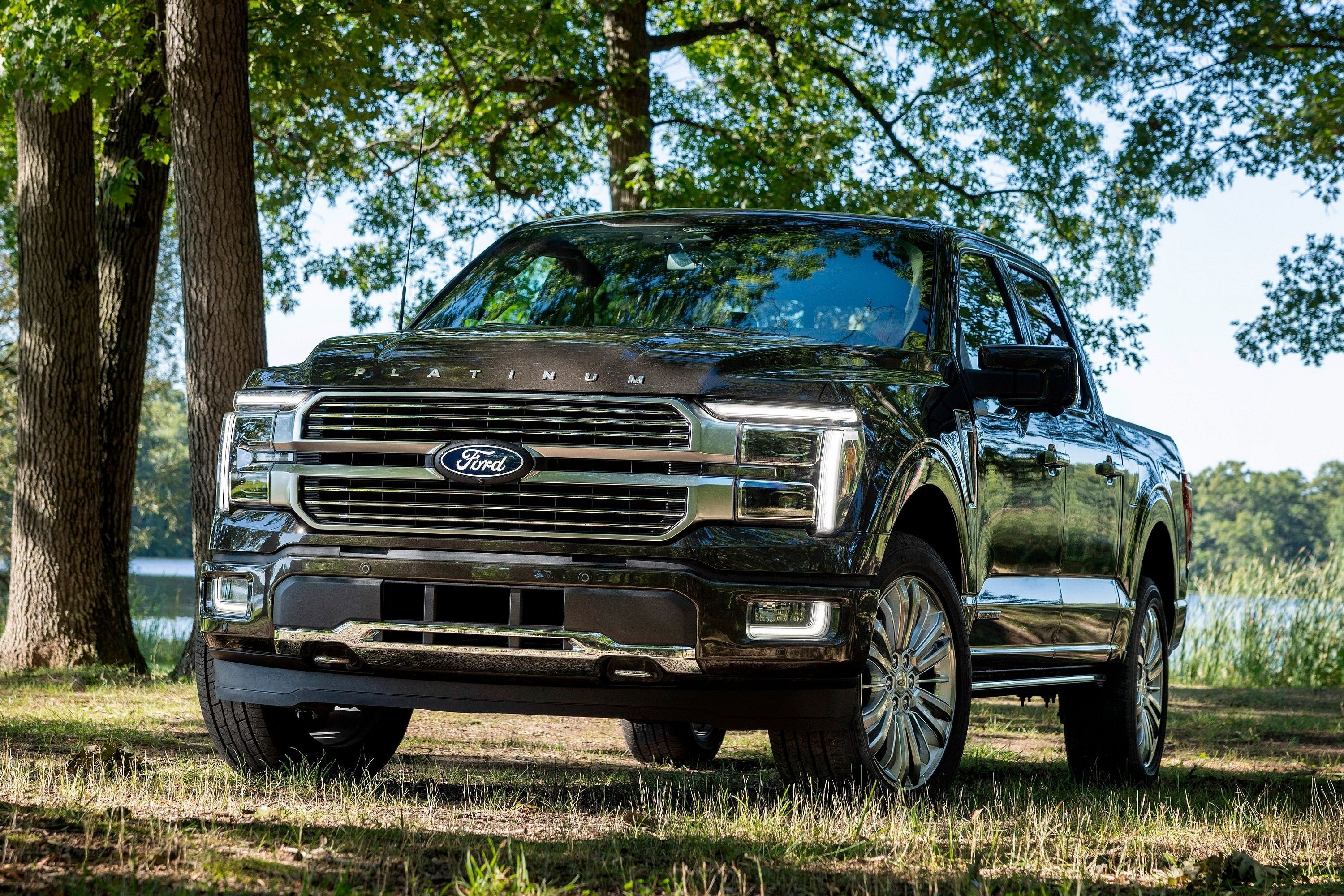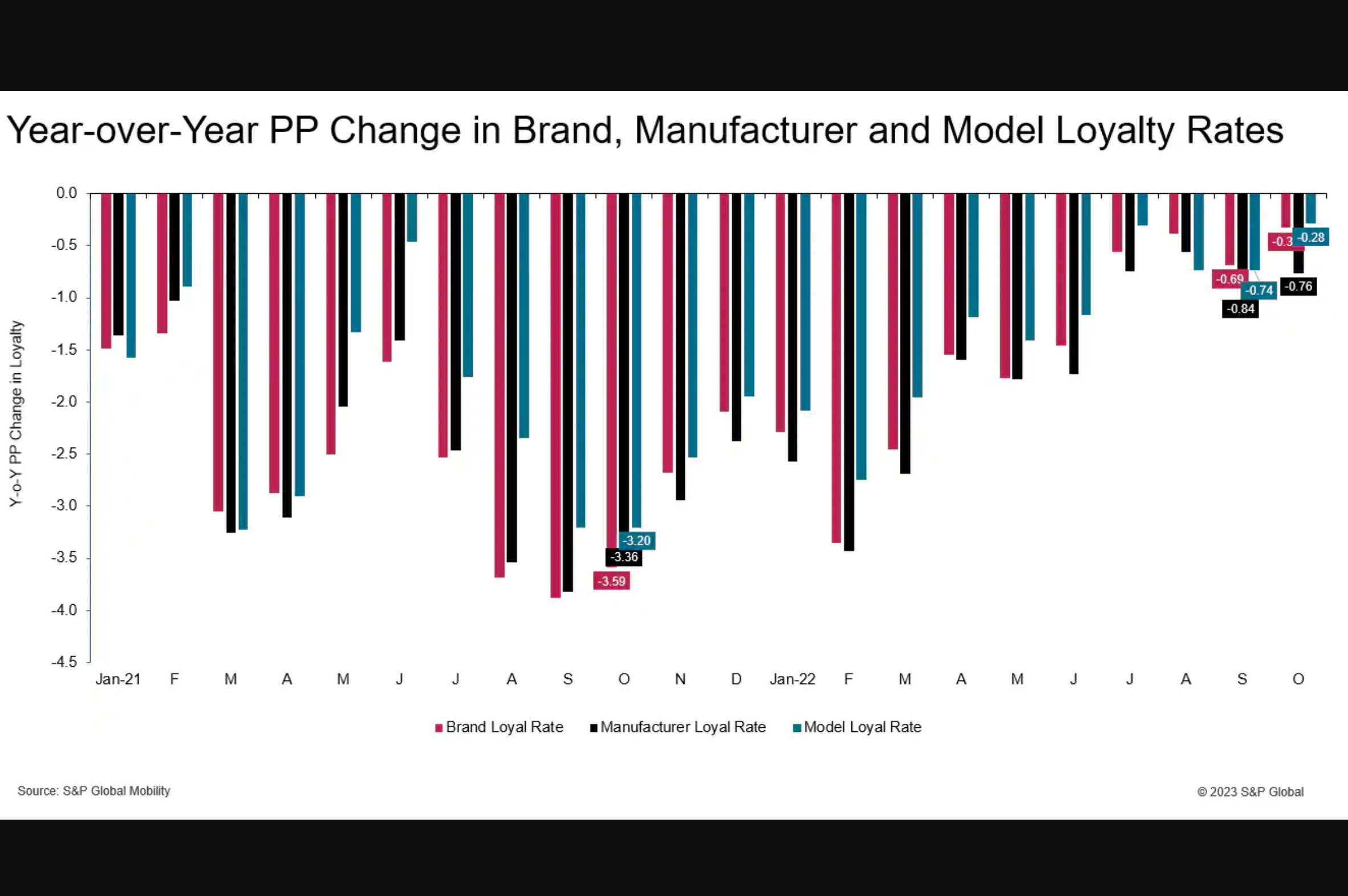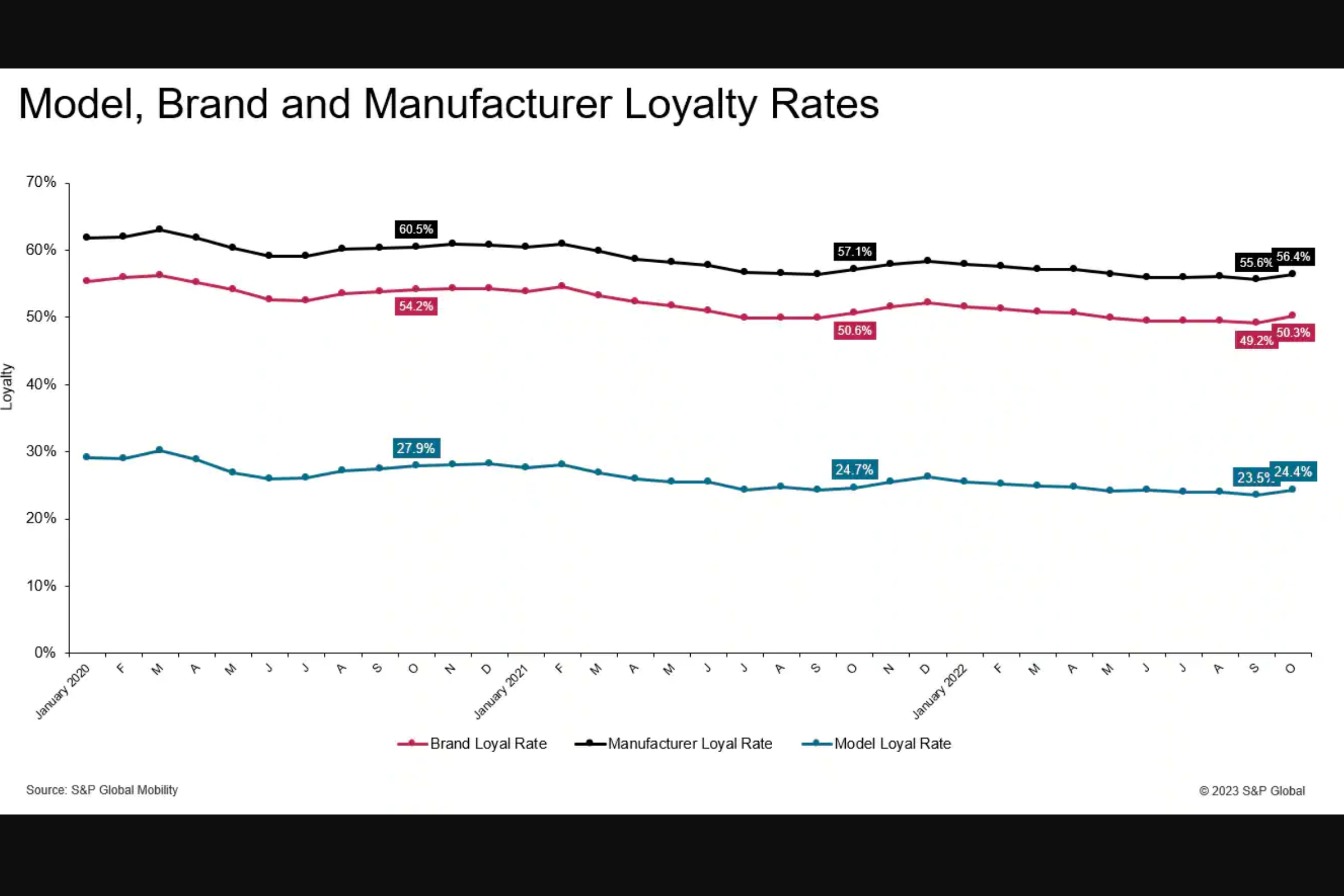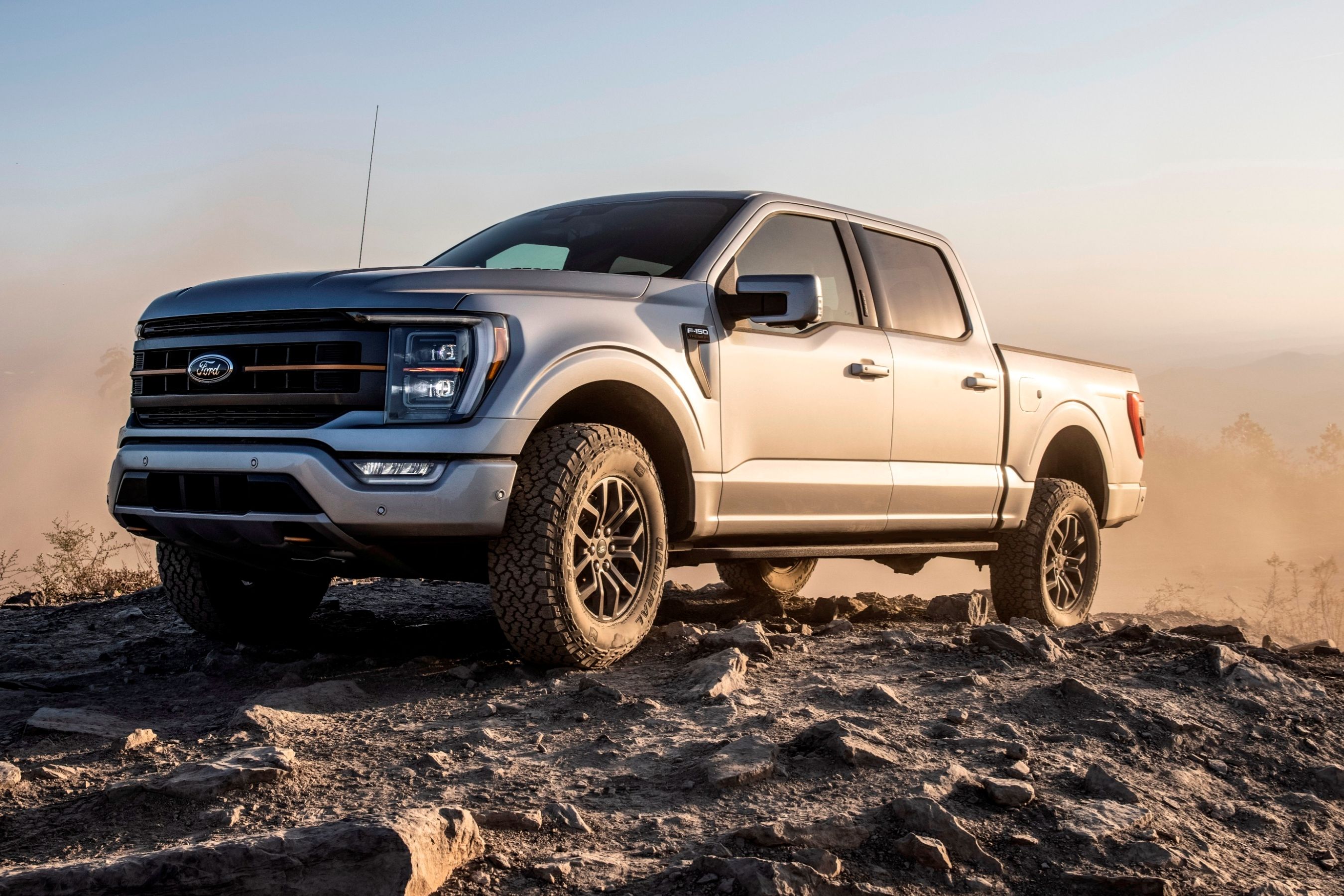
Brand loyalty has seen a slight uptick from 29.2% in September 2022 to 50.3% in October according to a report by S&P Global Mobility. This stands as one of the most meaningful increases in the past year but still sits far below pre-pandemic levels when, in March 2020, brand loyalty stood at 56.3%. This increase can most directly be attributed to a solidifying of the supply chain and getting more vehicles onto dealer lots.
If you somehow haven't noticed, basically every car brand has been struggling to produce vehicles over the past few years. Luckily, automakers are currently taking matters into their own hands to make sure once things are fixed, they will not run into these issues again. Thanks to these efforts, things are slowly starting to tick up, but let's see just how brand loyalty is affected by all this.
Brand loyalty can most directly be correlated to supply, the number of days, expressed in units, to deplete the current new car inventory at the current rate of sale. These metrics have a strong direct correlation to one another at .83 from January 2020 through October 2022, and so once days' supply started increasing in June 2022 to 26 days and up from there, brand loyalty started increasing soon after.
We noticed in the peak of the pandemic when people were still stuck at home from June 2020 to May 2021, brand loyalty was steadily increasing as days' supply was able to keep up, but once the production woes got into full swing, both metrics dropped substantially with a spike in late 2021.
Interestingly, according to the report, historical model, brand, and manufacturer loyalty rates have a .99 correlation, while model and corporate loyalties have a .98 correlation. Again with an increase in days' supply, it makes sense that we would see an increase moving into October of last year.
Finally, the report outlines that the declines in brand, manufacturer, and model loyalties seen in July-September 2022 all were under one percentage point. This drop from the decline in the same period the year prior, which saw declines above one percentage point, signaling a positive trend if it stays on this trajectory.
Now, what does this all mean? Really, it's hard to say. The report goes on to say that there was actually a decrease in days' supply from 34 to 33 from November to December 2022, so things may trend down a little in the short while. S&P says that most likely, brand loyalty will hover in the 49-51% range until production really starts to ramp up again.
Now, unfortunately, not every car company has the brand loyalty value of Toyota or the model value of the Ford F150, but it's interesting to see how consumer tastes change in the face of uncertainty.
Shortages aren't the only big issue affecting supply too, the other is the industry shift to different forms of vehicle propulsion whether that be electric, hydrogen, or synthetic fuels. These changes are seeing plants idled and refitted, new plants built, and many new battery plants constructed as well. As these things will take years to come to fruition, they're sure to be a drag on the industry, and brand loyalty, until then.



